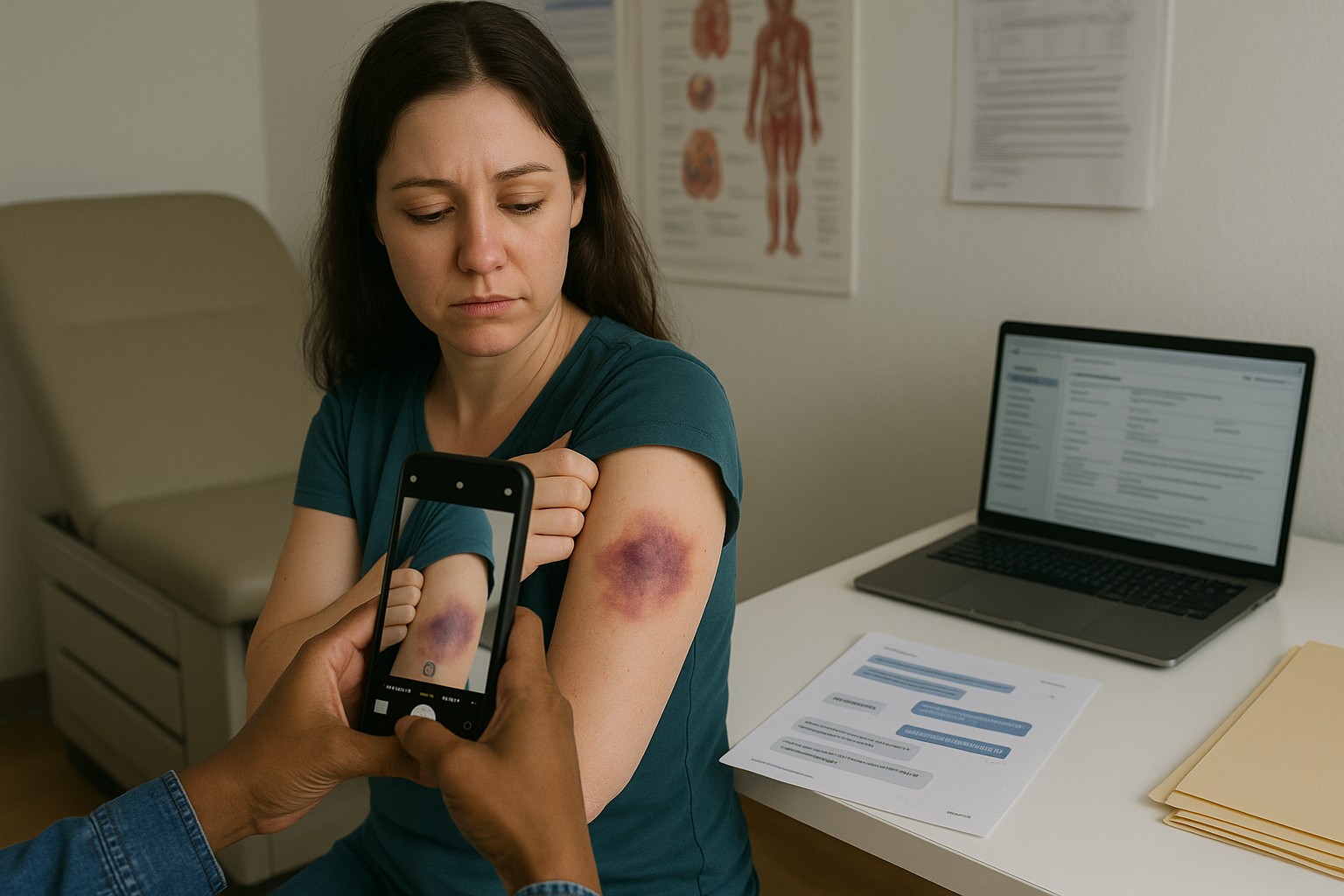Court-Ready Evidence in L.A.: Photographing Bruises, Archiving Texts & Pulling MyChart Records for DV Cases
This guide provides Los Angeles survivors with a practical guide to gathering court-ready evidence, including how to photograph injuries, archive digital messages, and use MyChart records for a domestic violence case.

In Los Angeles, as in any jurisdiction, the power of a domestic violence case often rests on the strength of its evidence. For survivors seeking a Domestic Violence Restraining Order (DVRO), presenting a clear and compelling narrative to the court is critical. This guide provides actionable steps for gathering and preserving the types of evidence that are most effective in L.A. courts—from documenting physical injuries to securing digital and medical records.
The Power of Evidence in L.A. Courts ⚖️
Judges in the Los Angeles Superior Court are trained to look for patterns of abuse and to assess credibility based on documented evidence. While your testimony is the foundation of your case, supporting evidence can substantiate your claims, making it more difficult for an abuser to discredit your account. Taking the time to properly document and preserve evidence is a brave and crucial step toward obtaining the legal protection you deserve.
1. Photographing Physical Evidence (Bruises, Injuries) 📸
If you have experienced physical violence, documenting injuries is paramount. Follow these steps to ensure your photos are "court-ready":
- Act Quickly and Get Medical Care: The first step is to seek medical attention. A medical record from an L.A. hospital or clinic is powerful, independent evidence.
- Use Good Lighting: Take photos in a well-lit area without a flash, as flash can wash out colors and make injuries less visible.
- Include a Time and Date: Have a watch or a newspaper with the current date visible in some of the photos, or use a phone's built-in camera that timestamps photos.
- Provide Scale and Context: Take a series of photos. The first should be a wide shot to show the location of the injury on your body. Then, take a few close-ups. For scale, you can place a common object like a quarter or a ruler next to the injury.
- Do Not Delete: Never delete any of the photos, even if they aren't perfect. They are part of your evidence.
2. Archiving Digital Evidence (Texts, Emails, Social Media) 📱
Digital communication is often a goldmine for evidence. Threats, harassment, and controlling behavior are frequently documented in writing.
- Screenshot Everything: Take screenshots of every text message, email, or social media post that is relevant to the abuse.
- Include the "Four C's": For a screenshot to be most effective, it should clearly show the Content of the message, the Contact (the sender and receiver), the Date, and the Time. This information proves the authenticity of the message.
- Back It Up: Once you have a screenshot, back it up to a secure, cloud-based service that your abuser does not have access to, or a new, secure email account.
3. Medical Evidence (MyChart & Hospital Records) 🏥
Medical records are powerful third-party evidence. In Los Angeles, many hospitals use electronic health record systems like MyChart.
- Request Your Records: As a patient, you have a legal right to request your medical records. This includes doctors' notes, diagnoses, and photos taken by staff.
- Use MyChart to Your Advantage: If your hospital or clinic uses MyChart, log in and download any relevant visit summaries or communications with your doctor. These can contain details about your injuries and your statements to medical professionals.
Final Pro Tips for L.A. Survivors:
- Keep a Journal: Document every incident, including the date, time, and a brief description. Note any emotional or financial abuse as well.
- Seek Legal Aid: Legal aid organizations in Los Angeles are experts at helping survivors gather and present evidence. They can guide you through the process and ensure your case is as strong as possible.
Gathering evidence can be difficult and emotionally taxing. But remember, each piece of evidence you secure is a step toward building a new, safe life.
[object Object]
1. Is a photo of a bruise enough evidence?
A photo of a bruise is powerful, but it is most effective when paired with other evidence, such as a doctor's note from a Los Angeles hospital visit, a written journal entry, and supporting texts or emails.
2. Should I delete texts after I screenshot them?
No. It is crucial to never delete any original text messages, as the abuser's lawyer may argue that your screenshots were fabricated. The original message is the most authentic form of evidence.
3. How long do I have to get my evidence?
You should gather evidence as soon as possible after an incident. However, you can also use older evidence to demonstrate a pattern of abuse. The Los Angeles court recognizes that a DVRO case can be built on a history of incidents, not just the most recent one.
4. Can I use social media posts as evidence?
Yes. Screenshots of threatening social media posts, comments, or private messages from the abuser can be used as evidence. Make sure the screenshot includes the user's name, the date, and the time.
5. Where can I get help with gathering evidence in Los Angeles?
Numerous legal aid organizations in Los Angeles specialize in domestic violence. They can provide free legal counsel and guidance on what evidence to collect and how to present it effectively in court.
6. What if my evidence isn't perfect?
Even imperfect evidence is better than no evidence. A judge will consider all the facts and testimony presented. A journal with notes and a few photos can be a very strong foundation for a case.
